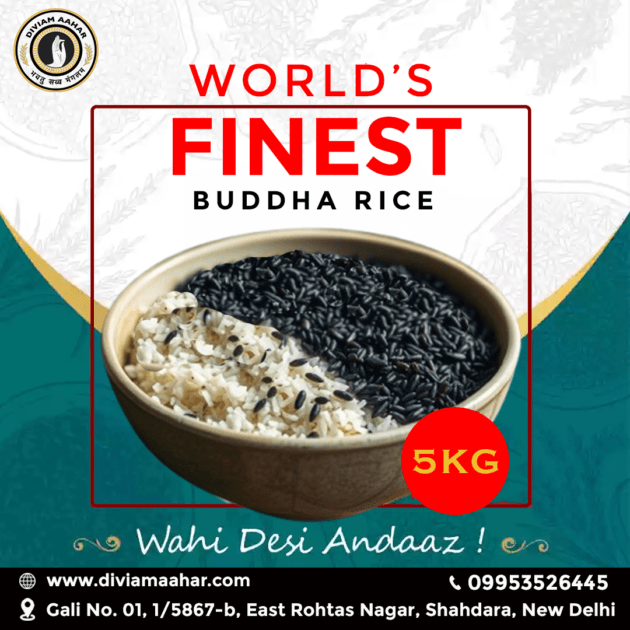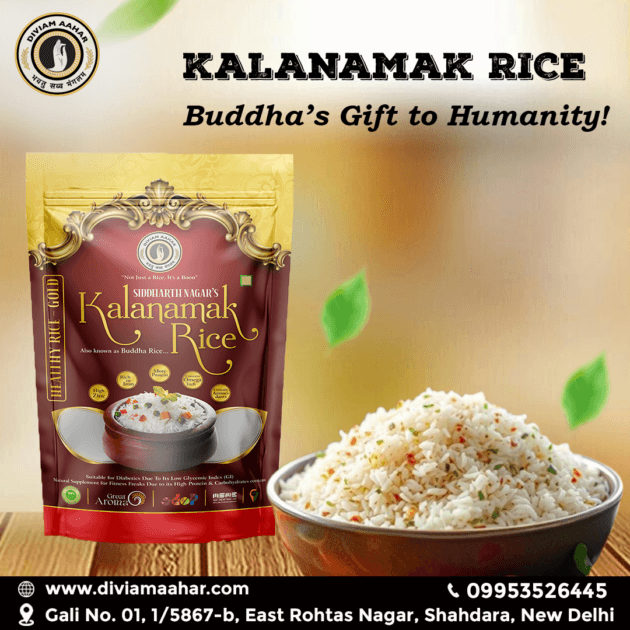Table of Contents[Hide][Show]
India is a land of diverse agricultural heritage, and KalaNamak Rice stands as a testament to this rich tradition. Known as one of the finest scented rices in the world, KalaNamak Rice is a GI-tagged variety from the northern plains of India. In this article, we explore the origins, production, pricing, and benefits of this extraordinary rice, giving you an in-depth understanding of why it is considered the “Black Pearl of Indian Rice.”
What is Kalanamak Rice?
KalaNamak Rice is an ancient variety of rice native to the Terai region of Uttar Pradesh, India. Renowned for its distinct aroma and taste, it is often described as a “gift from Buddha” due to its deep-rooted historical connection with Buddhism. The grain is medium-sized and blackish in appearance, giving it the name “KalaNamak,” which translates to “Black Salt.”

Origins and Historical Significance
The history of KalaNamak Rice dates back over 2,000 years. Legend has it that Lord Buddha himself advised the people of the region to cultivate this rice due to its medicinal properties. Historically, it has been a staple for royalty and was considered a premium grain for feasts and ceremonies.
The Growing Regions of Kalanamak Rice in India
Primary Cultivation Areas
KalaNamak Rice thrives in the fertile plains of eastern Uttar Pradesh, particularly in districts such as:
- Siddharthnagar
- Gorakhpur
- Basti
- Maharajganj
These regions offer the ideal soil and climatic conditions for the production of KalaNamak Rice. The unique terroir of this region enhances the grain’s aroma and nutritional profile.
Sustainable Farming Practices
Farmers in these regions primarily rely on traditional and organic farming methods to cultivate KalaNamak Rice. This ensures the grain retains its natural flavor and nutritional qualities.

Characteristics That Make Kalanamak Rice Unique
- Aromatic Profile: The rice emits a strong fragrance similar to that of popcorn, making it a delight for culinary enthusiasts.
- Nutritional Benefits: Rich in iron, zinc, and antioxidants, it supports overall health.
- Low Glycemic Index: Suitable for individuals with diabetes.
- Medicinal Properties: Traditionally used in Ayurveda for its digestive and therapeutic benefits.
KalaNamak Rice Production Process
Sowing and Cultivation
The cultivation of KalaNamak Rice begins in June with the arrival of monsoons. Farmers use heirloom seeds and follow sustainable practices. The crop requires less water compared to other rice varieties, making it eco-friendly.
Harvesting
Harvesting takes place in November. The grains are carefully threshed and sun-dried to preserve their natural aroma and texture.
Processing and Packaging
Modern mills are employed to process the rice without compromising its organic essence. Vacuum-sealed packaging ensures the grains retain their freshness and aroma for a longer duration.
Kalanamak Rice Price Trends in India
The price of KalaNamak Rice varies depending on factors such as quality, grade, and availability. On average:
- Premium quality KalaNamak Rice is priced between ₹150 to ₹300 per kilogram.
- Organic certified variants may cost more, reflecting their authenticity and higher demand.
Factors influencing the price include:
- Seasonal Variations: Prices peak during off-season due to limited supply.
- Export Demand: Growing international interest has raised its market value.
Why Choose the Best Kalanamak Rice?
Flavor and Versatility
KalaNamak Rice enhances dishes like biryanis, pulaos, and desserts with its unique aroma and nutty flavor.
Health Benefits
- Rich in Micronutrients: Boosts immunity and combats anemia.
- Detoxifying Properties: Cleanses the body of toxins.
- Weight Management: Its high fiber content aids digestion and keeps you full longer.
Challenges in Kalanamak Rice Production
Despite its growing popularity, KalaNamak Rice production faces challenges such as:
- Low Yield: Traditional farming methods result in lower yields.
- Market Penetration: Limited awareness and marketing restrict its reach.
- Climate Change: Unpredictable weather patterns impact cultivation cycles.
Efforts are being made to promote this rice through government schemes, farmer cooperatives, and awareness campaigns.
Where to Buy Kalanamak Rice in India
You can purchase KalaNamak Rice through:
- Online Platforms: Many e-commerce websites offer organic KalaNamak Rice. Buy Now
- Local Markets: Visit agricultural fairs and regional markets in Uttar Pradesh. Buy Now
- Specialty Stores: Organic and premium grocery stores often stock high-quality grains. Buy Now
Conclusion
KalaNamak Rice is not just a staple food; it is a heritage crop that embodies the essence of Indian agriculture. Its unparalleled aroma, flavor, and nutritional benefits make it a prized possession in kitchens across the globe. Whether you are a connoisseur of fine foods or someone seeking healthy eating options, KalaNamak Rice is an excellent choice.
#KalanamakRice #buddharice #kalanamakriceprice #AromaticRice #TraditionalFlavor #HealthyLiving #NutrientRich #OrganicChoice #AncientGrain #BuddhasGift #RiceLovers #PremiumRice #AuthenticTaste #SustainableFarming #diviamaahar #alexrohitgupta

 Is kalanamak rice and black rice the same?
Is kalanamak rice and black rice the same?